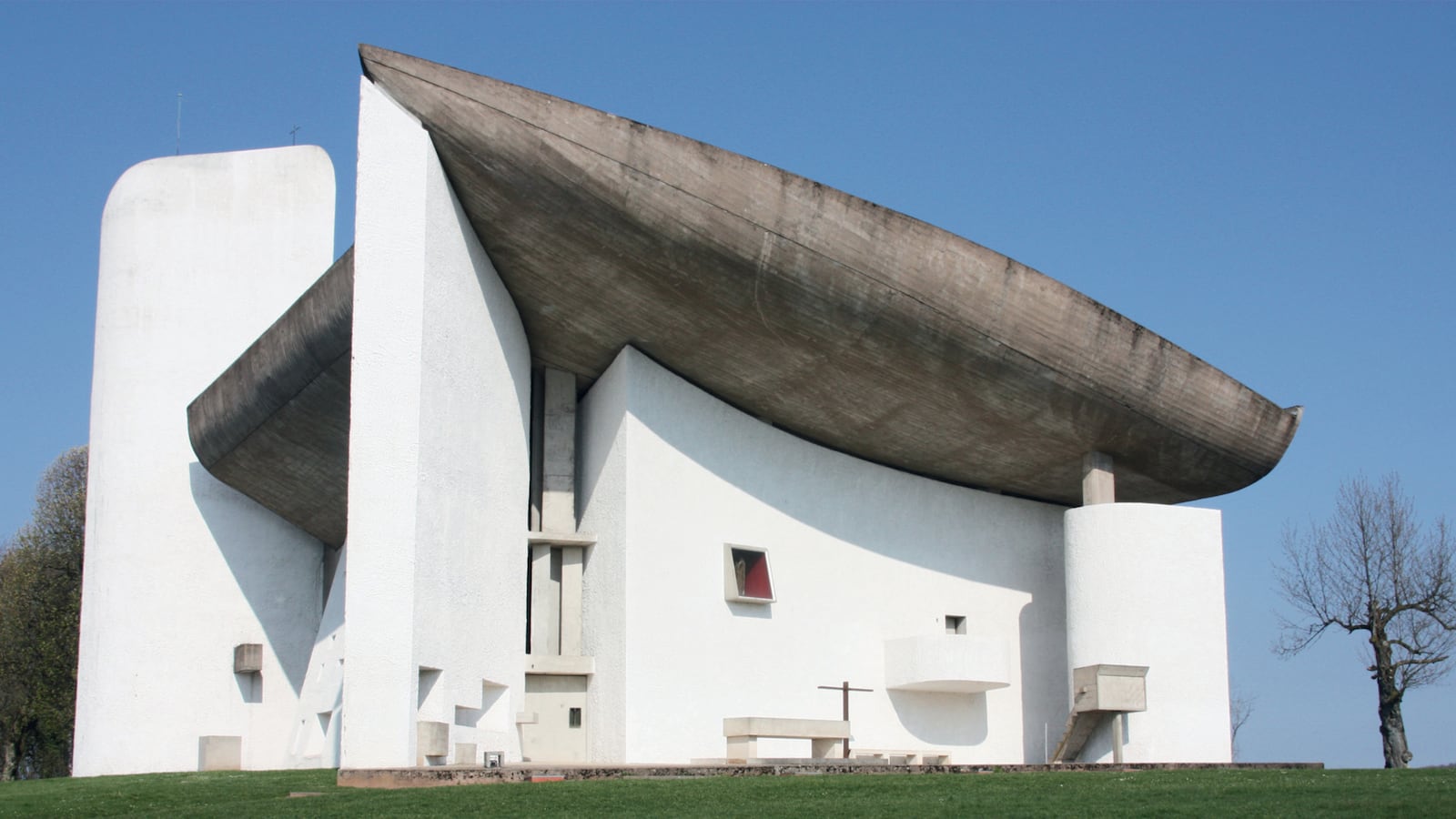
Brutalist buildings across the U.S. have found themselves under assault of late, their hulking concrete forms deemed unworthy of preservation. There is perhaps one architect whose work in this era will survive: Le Corbusier, the Swiss architect who died this month, 50 years ago. His work, both the great and not so great bad, is the subject of a fantastic new edition from Phaidon of Le Corbusier: Ideas and Forms, by the architectural historian William JR Curtis.
This photograph is one of Le Corbusier's most iconic buildings, the Unité d'Habitation in Marseilles, France. It was while working on this project, the author writes, that he "decided to make roughness an aesthetic virtue, exploiting the imprint and grain of the formwork planks as if they were the chisel marks of one of Savina's sculptures." It would later be called béton brut.

Chandigarh was the first planned city in India post-partition. Its fate came by a circuitous route into the hands of Le Corbusier. This image is of the High Court, which was built between 1951 and 1955. What are perhaps most interesting about the court are the ancient influences found in its design.

"The theme of an open hall of justice perhaps integrated the architect's interest in the public audience halls (Diwan-i-Am) of the kind he had seen and admired in the Red Ford in Delhi," explains Curtis.

"The underside of the [High Court's] parasol was arched in a manner recalling sketches and photographs that Le Corbusier had made forty years early of the Basilica of Constantine in Rome," writes Curtis. "The huge parasol of the High Court was intended to convey the 'shelter, majesty, and power of the law'."

In 1925, Le Corbusier unveiled his 'Plan Voisin pour Paris' at the Exposition des Arts Decoratifs. To achieve the hideous vision, a significant chunk of Paris would have to have been leveled. Even more shocking, is that according to Curtis, Le Corbusier "supported his case with the argument that a drastic move was necessary to decongests Paris traffic" and that he reached out to automobile industry leaders, who were "happy to see city plans so compromisingly dedicated to automobiles." Le Corbusier may have couched his reasoning for the project in serving the poor and middle class, but as Curtis bitingly observes, "the surgery of the Plan Voisin was so drastic that it might well have killed the urban body ... that it claimed to be saving."

Ahmedabad was the textile center of India, and its wealthy citizens were keen on funding an architectural display that would put their city on the map culturally. One of the more famous of those built was the Millowner's Association Building, which was constructed between 1951 and 1954.

Designed by Le Corbusier and built in 1928-29, the Villa Savoye in Poissy, France is considered one of the best examples of the International Style. "In modernist mythology," Curtis writes, "it was the image par excellence of the machine à habiter--a pristine health house open to sun, light and views over greenery."

Built in 1953-54, the chapel at Ronchamp is an incredibly complex building as far as the experience goes. "The building unfolds as one gradually moves around it," narrates Curtis.

Perhaps nowhere has been as unkind as the U.S. to the legacy of brutalism. But it is in the U.S., Curtis claims, that "Le Corbusier assembled a sort of summa of his discoveries; the results of his life-long quest for principles. The piloti, slab, brise-soleil, ondulatoire, aerateur and other parts of the architect's language for concrete were given their quintessential definition." That building is the Carpenter Center for the Visual Arts at Harvard.

Le Corbusier: Ideas and Forms by William JR Curtis. Published by Phaidon.






